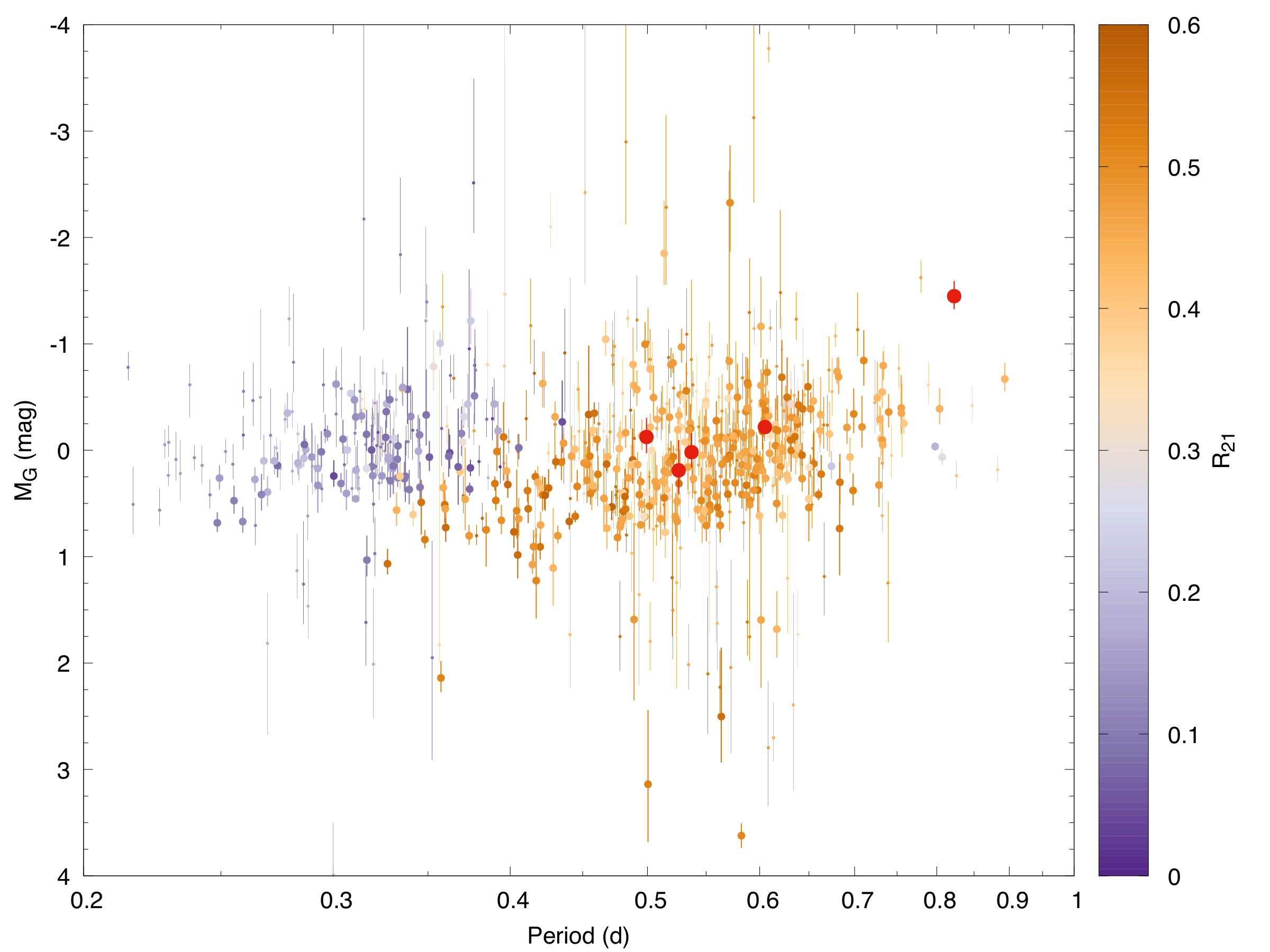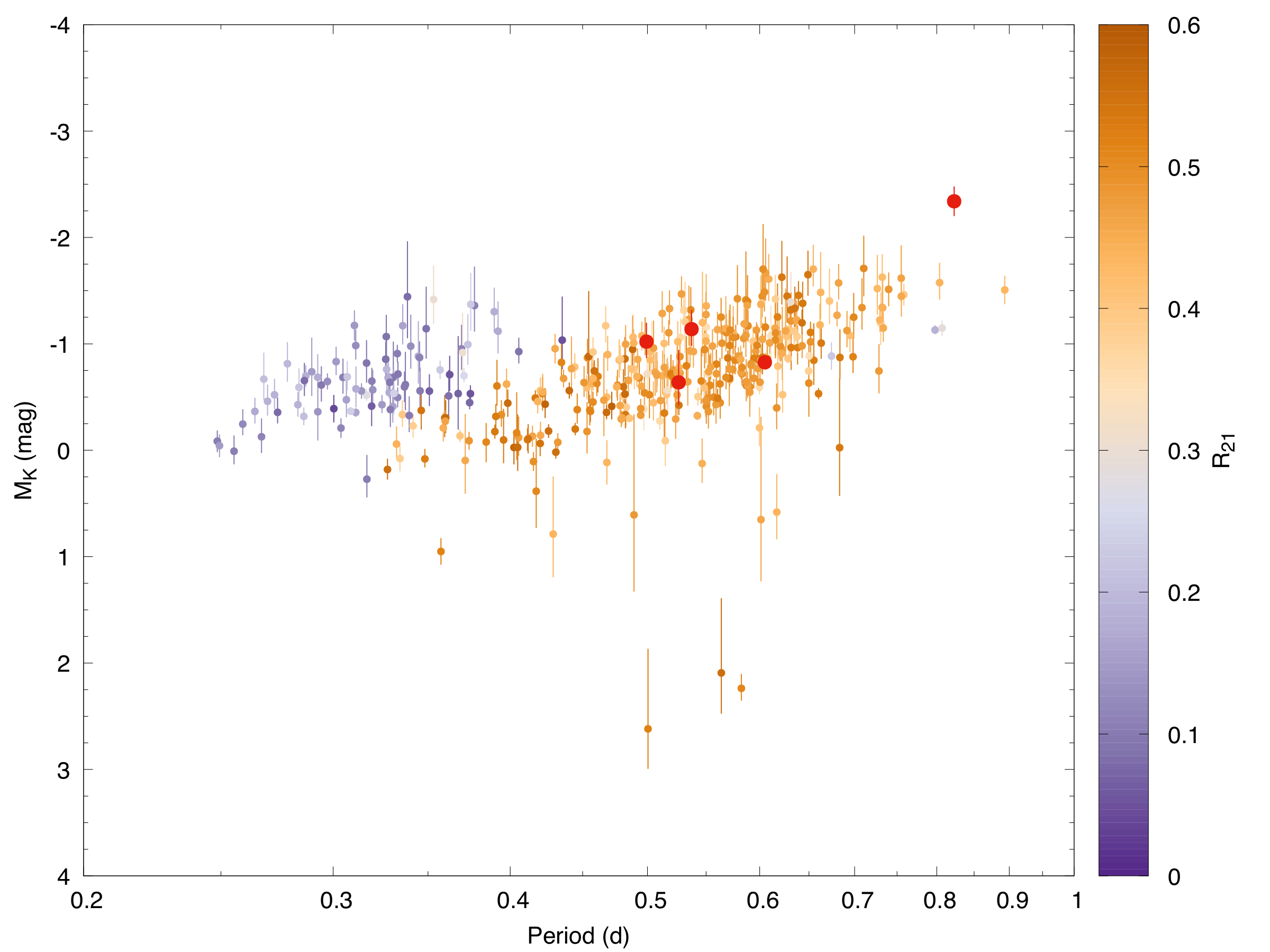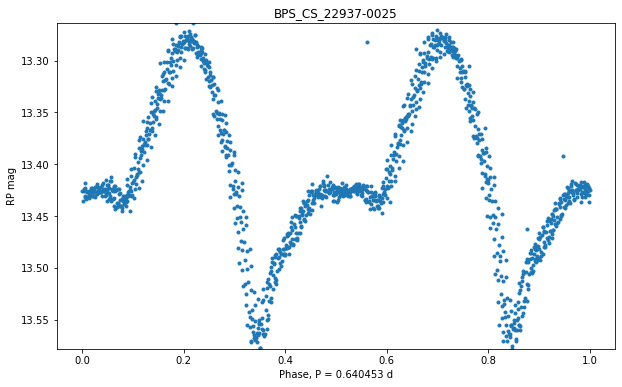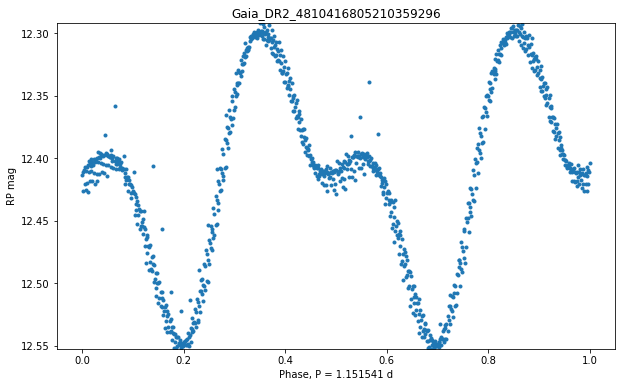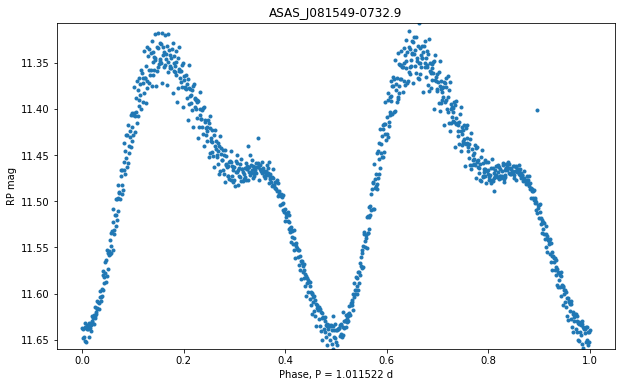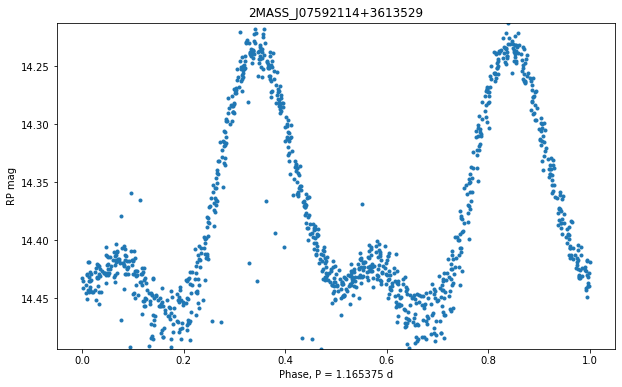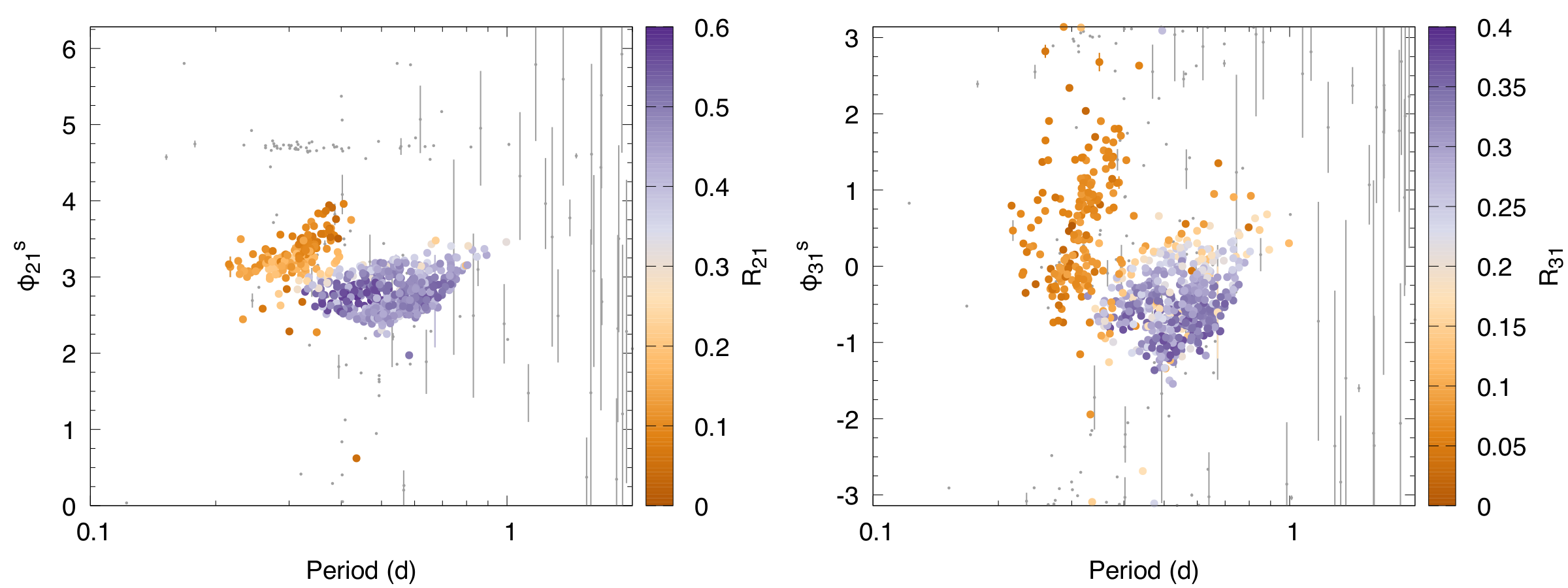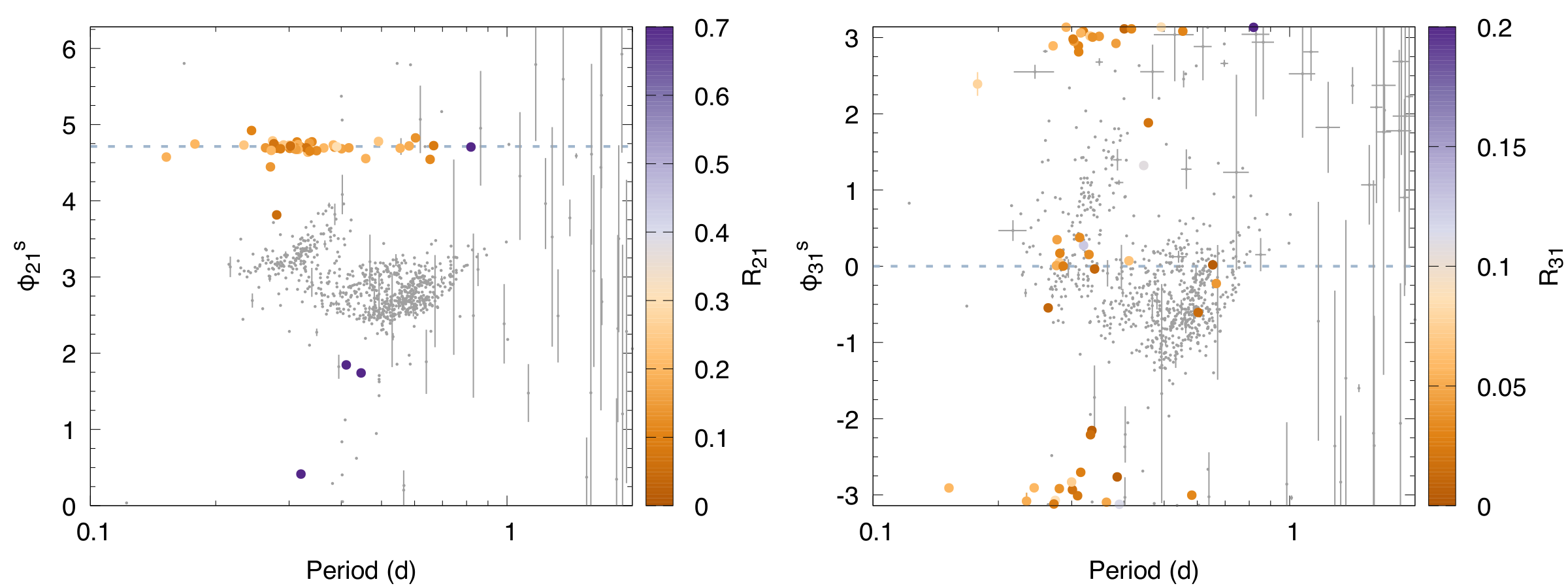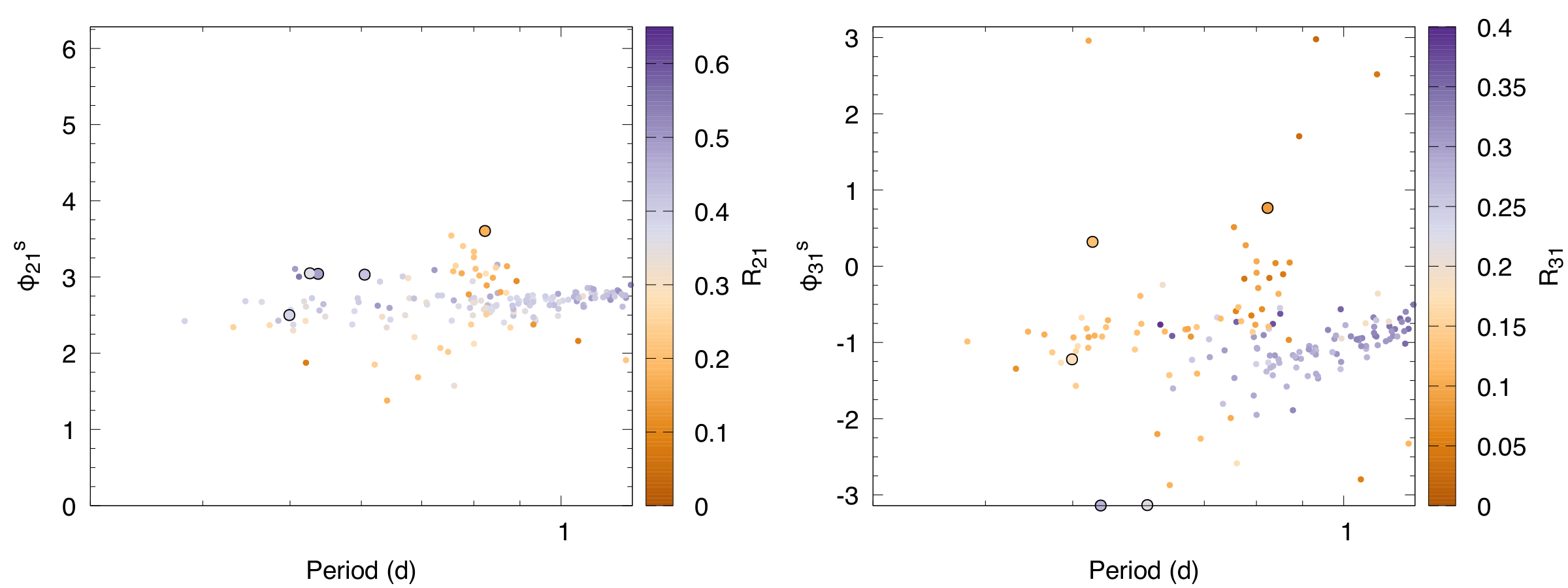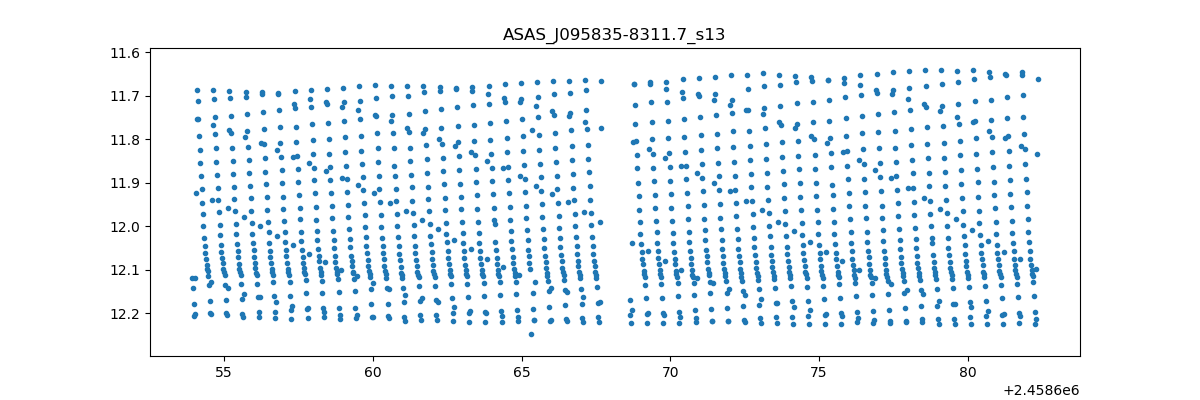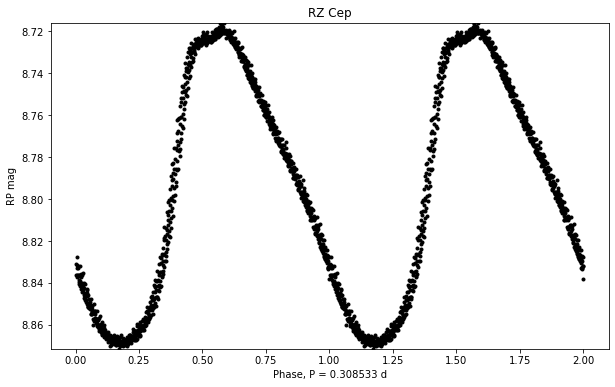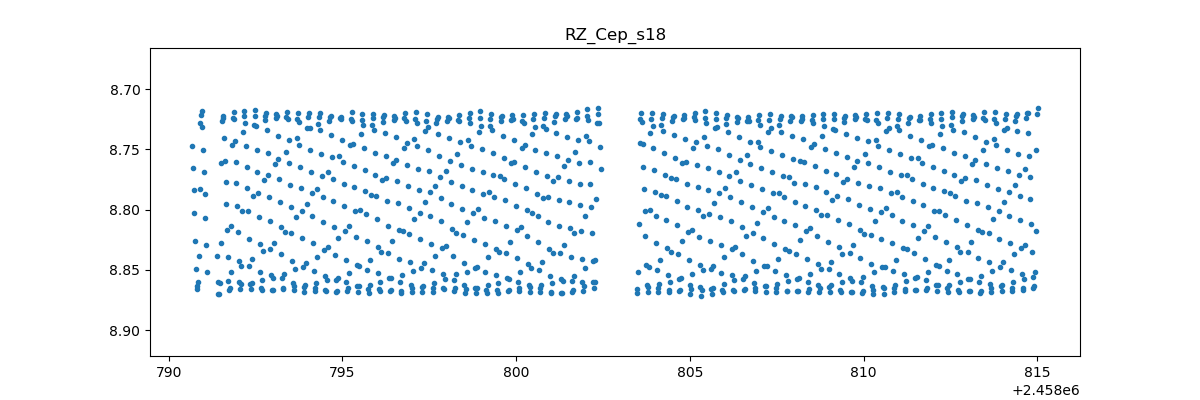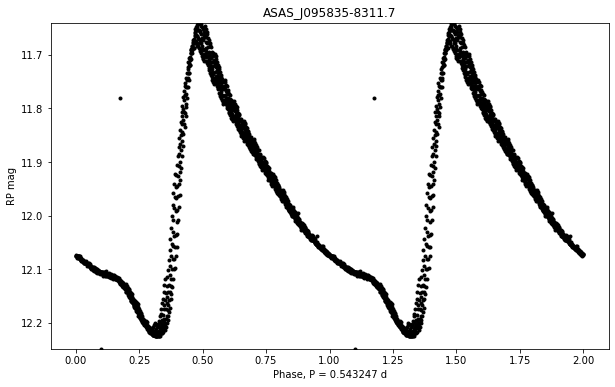Over 200 000 RR Lyrae candidates were detected in Gaia DR2. However, most of these are too far to have accurate parallaxes and too faint to have precise photometry from TESS. We wanted to find out how pure the RR Lyrae candidate list is, and how many anomalous Cepheids might hide among them.
We selected stars from the DR2 all-sky variability catalog of Holl et al. (2018) that are brighter than 15 mag in the GRP band (which is very similar to the passband of TESS). We then selected those that fall on silicon between TESS Sectors 1-22 and are within 4000 pc, and ended up with an initial list of 860 stars. We then added XZ Cet, one of the anomalous Cepheids prototypes to the sample for reference, although it was not classified as variable in DR2.
We calculated the absolute brightnesses with the mwdust code and the `combined19' extinction model which is the combination of four different works (Bovy et al., 2016).
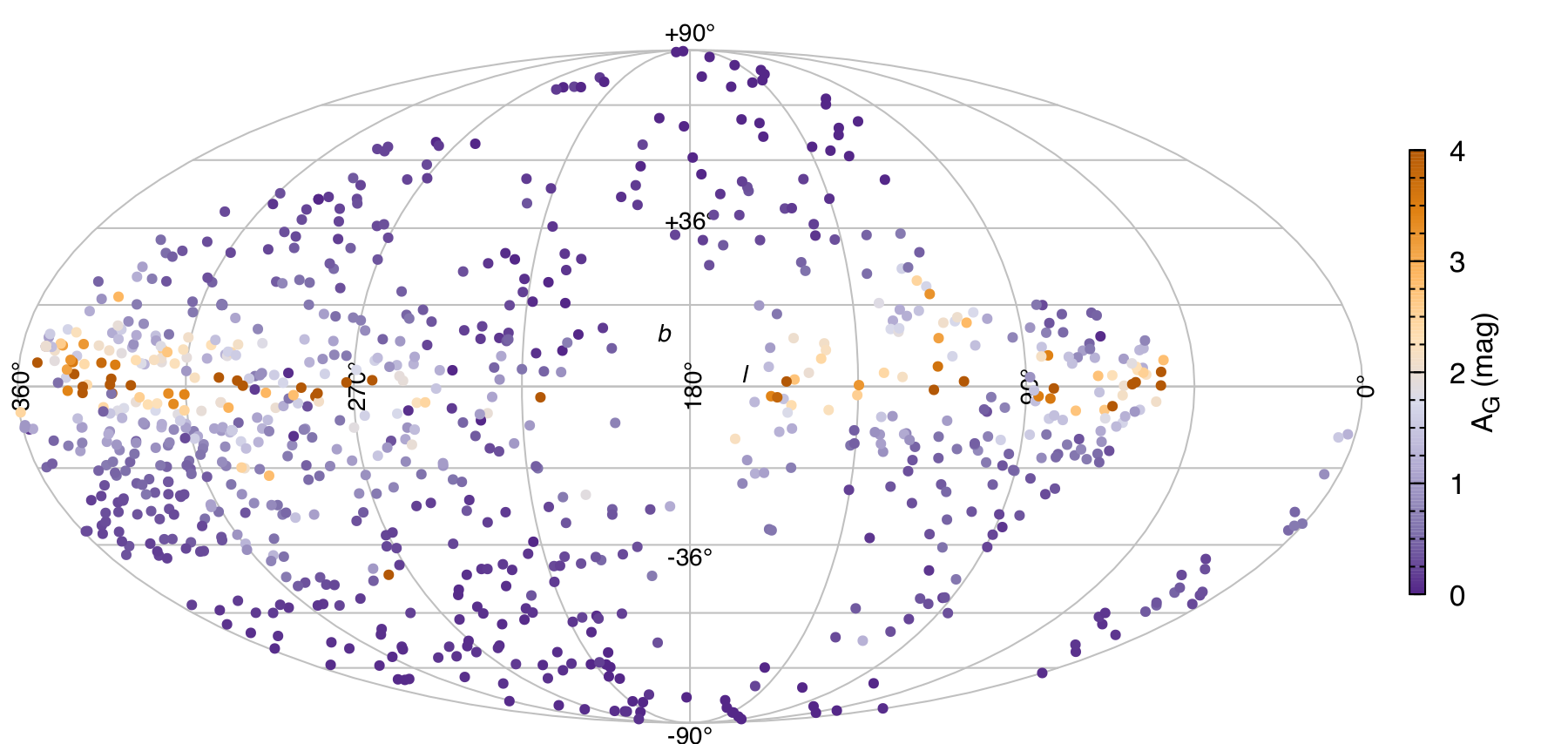
All targets in Galactic coordinates: stars with very large extinction correction cluster along the Galactic plane. Uncertainties in distance-dependent extinction lead to overcorrection in the absolute magnitudes.
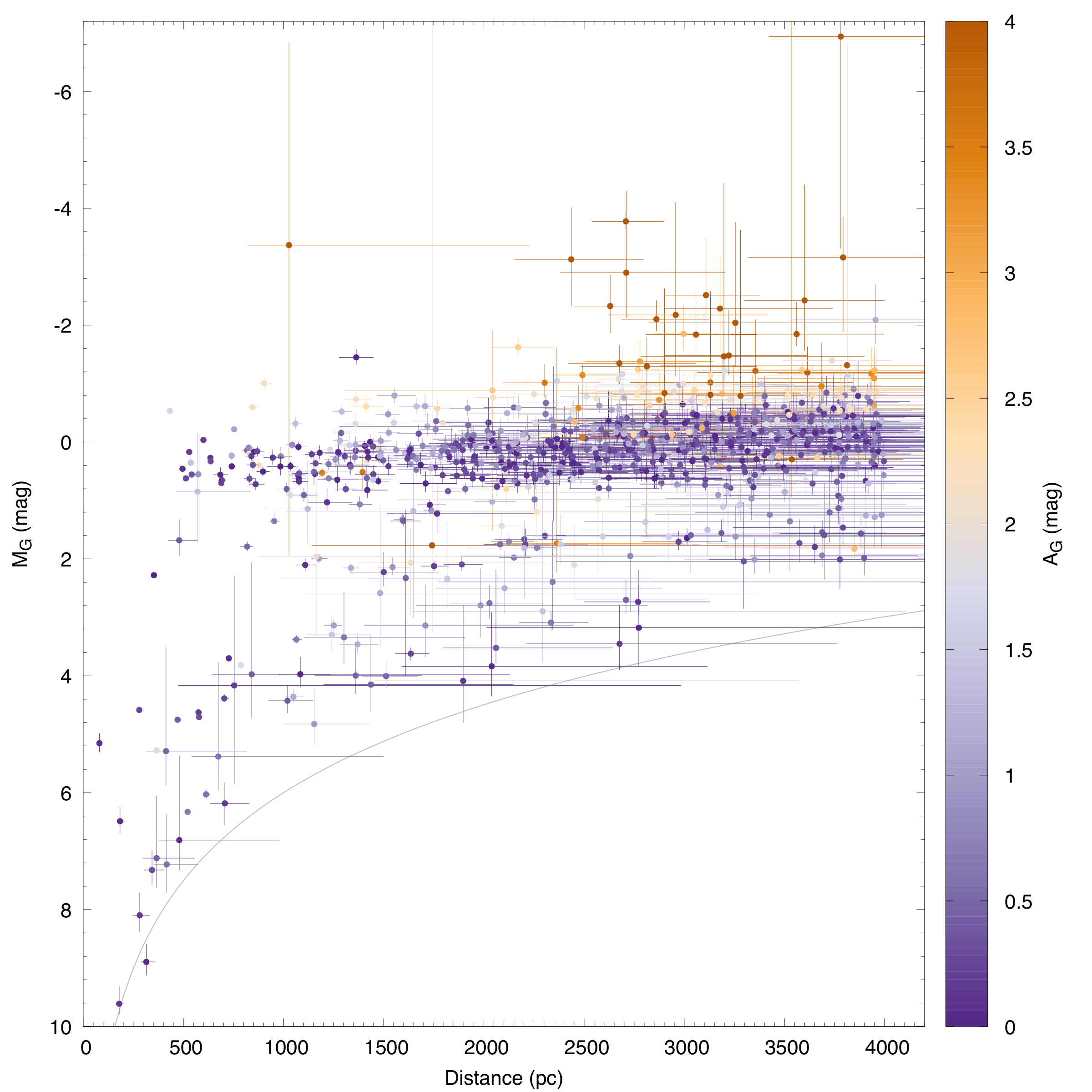
Distances from the Sun vs. G absolute magnitudes of all 860 stars. Color represents the calculated interstellar extinction. The grey line is the brightness limit of the selection.
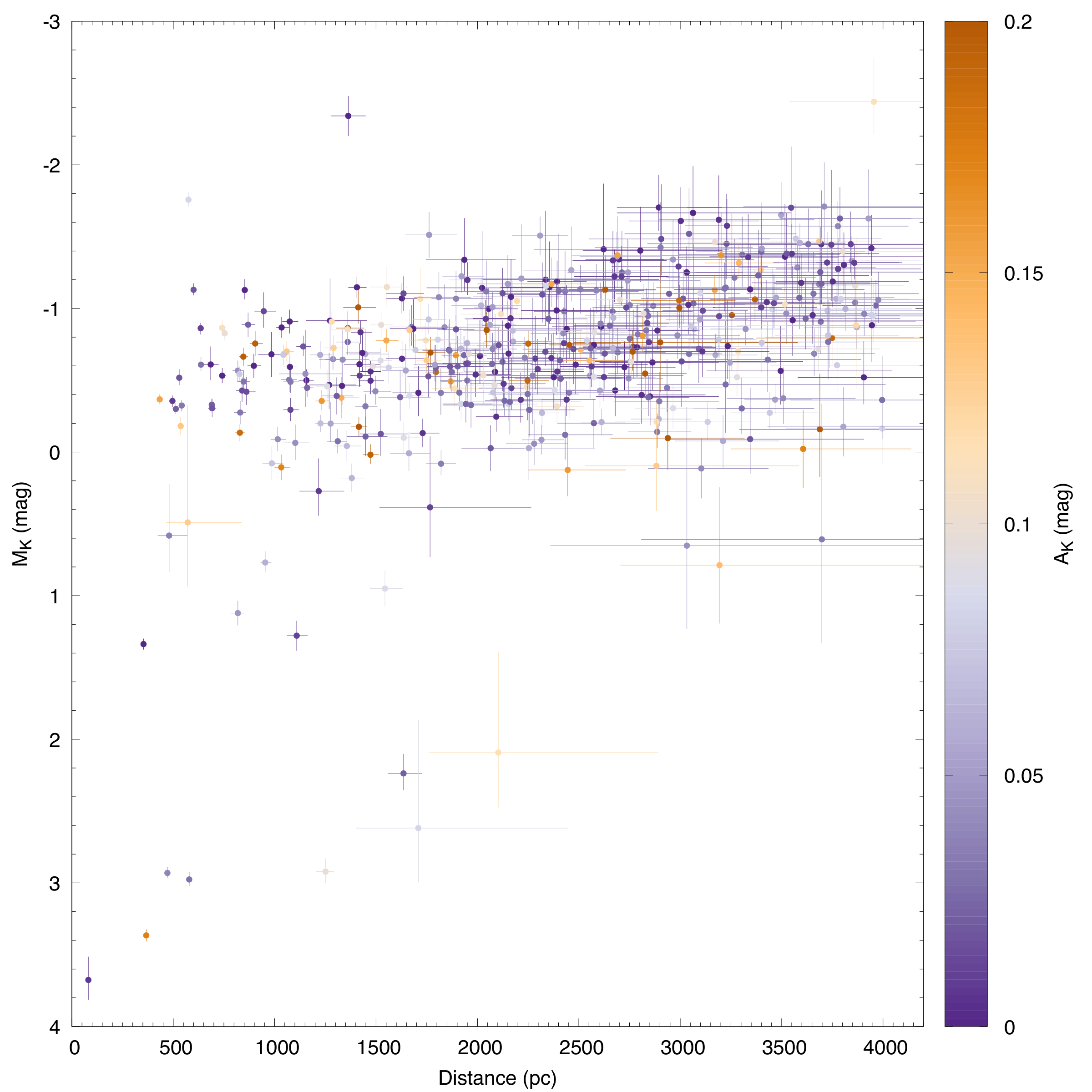
Same but for absolute K magnitudes of 454 stars. The near-infrared is much less sensitive to extinction, but nearly half of our sample doesn't have accurate K-band brightness measurements available.
We limited this initial study to stars within 4000 pc. At this value the relative distance errors reach 6-18%, leading to uncertainties in MG that are comparable or larger than the width of the RR Lyrae PL relation.
We calculated the Fourier parameters of each TESS light curve to classify them (see on the right), then plotted only those stars whose Fourier-parameters fitted into the RR Lyrae loci based on the TESS light curves:
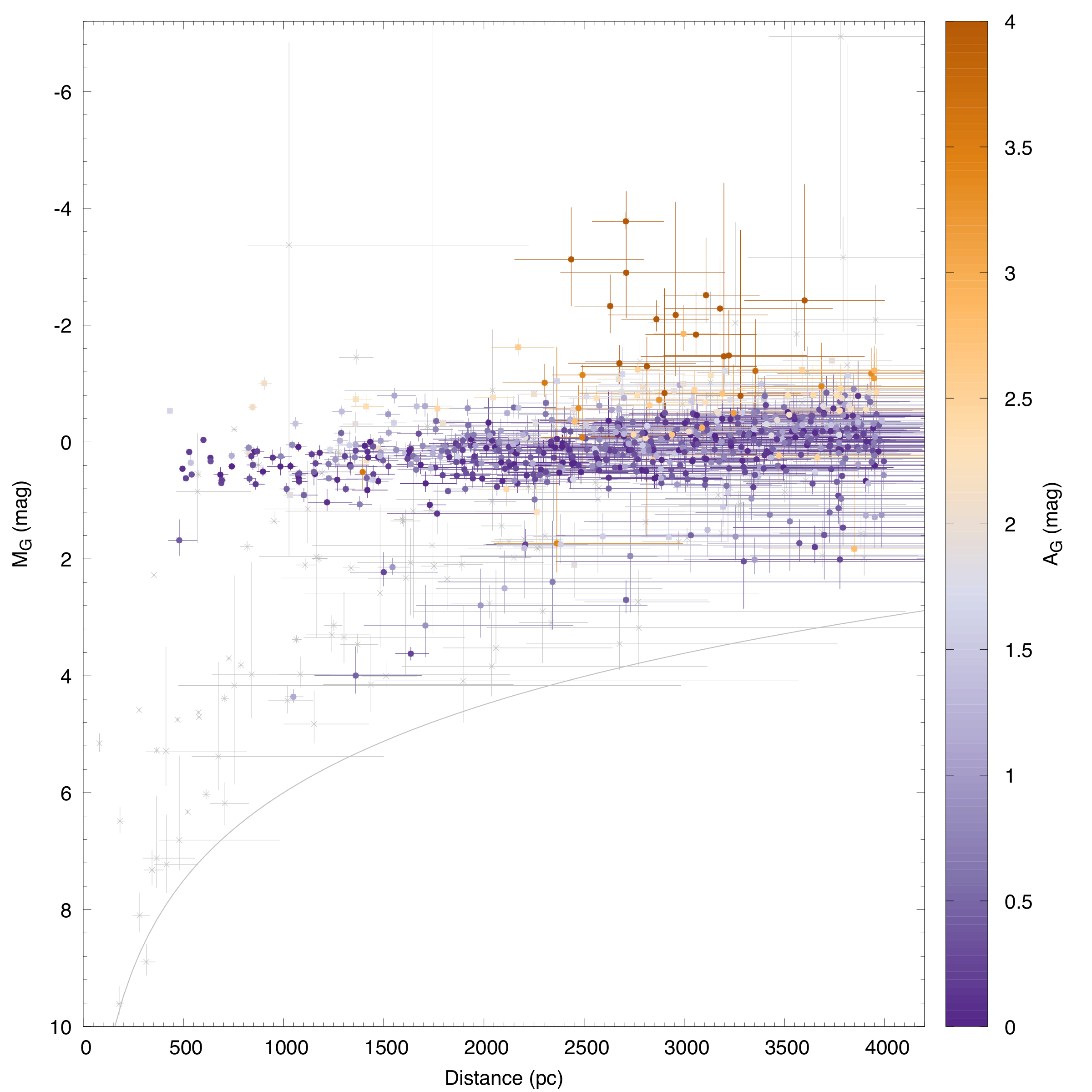
Gaia G-band absolute magnitudes vs distance, for the RR Lyrae sample only: grey crosses mark the stars we removed based on their light curve shapes.
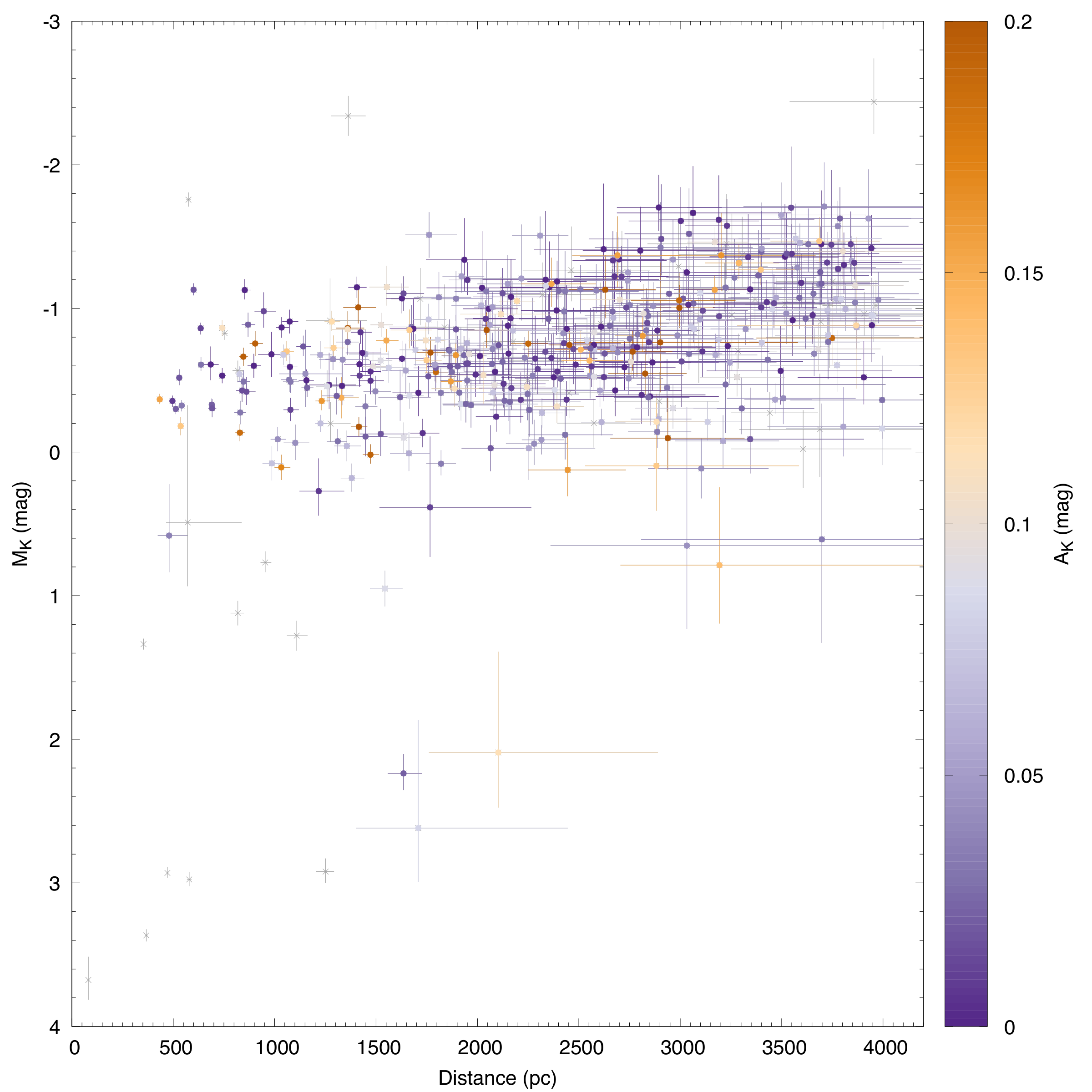
Same as on the left, but with the K absolute magnitudes. The difference here is less pronounced.
Our RR Lyrae sample is clearly much less affected by misidentified stars, but still not completely clean. Some sub- and superluminous stars still persist that will require further inspection.


